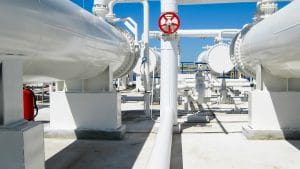 There are many different concerns when it comes to optimizing electrical thermal management in most industries. For instance, solutions have to not only effectively prevent electrical overheating, but also reduce a company’s reliance on energy and its need to constantly repair or replace cooling equipment. To be effective, modern thermal management solutions also have to offer an adequate level of ingress protection according to their specific applications. Heat exchangers’ ability to streamline the processes of electrical thermal management is an important factor in their popularity. However, so is their ability to offer optimal protection for a wide variety of applications in virtually any environment.
There are many different concerns when it comes to optimizing electrical thermal management in most industries. For instance, solutions have to not only effectively prevent electrical overheating, but also reduce a company’s reliance on energy and its need to constantly repair or replace cooling equipment. To be effective, modern thermal management solutions also have to offer an adequate level of ingress protection according to their specific applications. Heat exchangers’ ability to streamline the processes of electrical thermal management is an important factor in their popularity. However, so is their ability to offer optimal protection for a wide variety of applications in virtually any environment.
Ambient cooling without exposure
Many types of heat exchangers lower operating costs and boost overall productivity by making ambient cooling a viable solution for electrical equipment. Ambient cooling is the process of keeping the temperature inside of an electrical enclosure at just above the ambient temperature outside of it. For most applications, the maximum operating temperature is higher than this ambient, and therefore, ambient cooling is often more than adequate to prevent overheating. Heat exchangers achieve this by circulating a cooling fluid within a closed loop system, where the fluid can absorb and transfer electrical waste heat safely and continuously.
Protection against condensation
When it comes to protection for an electrical enclosure, condensation has traditionally been one of the most common concerns. For example, air conditioners and air compressing units that cool enclosures with chilled air may offer an adequate seal against external contaminants. However, the chilled air they rely on can also lead to the formation of condensation within the enclosure. This moisture can lead to damaged components and malfunctioning or failed electrical equipment. By contrast, heat exchangers don’t utilize chilled air, and therefore, do not produce condensation within an electrical enclosure. Combined with their high-quality neoprene seals and gaskets, this makes them a much more protective solution for most applications.
Extra fortification in hazardous locations
Even common applications in mild climates and housed in-doors require some level of protection. However, applications that operate in extreme and/or hazardous conditions require substantially higher levels of protection to ensure both safety and system quality. Modern heat exchangers can often be designed specifically to operate in hazardous conditions, and are certified per UL/cUL as well as ATEX and IECEx standards. For more information about optimal protection in thermal management with heat exchangers, call Noren Thermal Solutions in Taylor, TX, at 866-936-6736.







